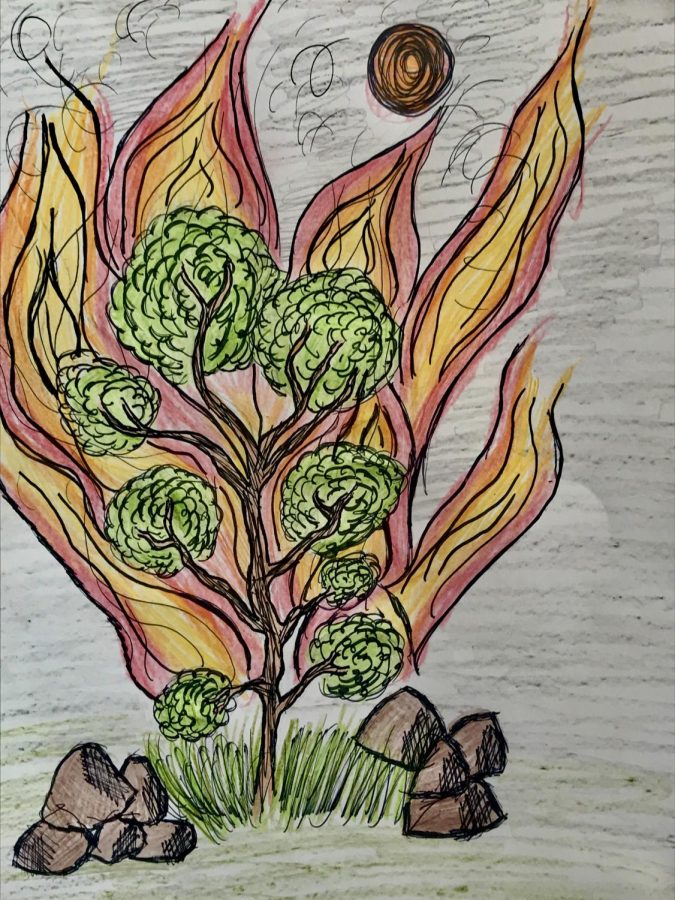Historic Wildfires Ravage California Amid Extreme Weather Conditions
September 21, 2020
By Summer Ingalls
Staff Writer
Over Labor Day weekend, extreme weather prompted new fires along the West Coast, leading to unprecedented fire conditions, sparking concern among many.
According to Cal Fire, wildfires have burned more than 2 million acres this year so far, an exponential growth from that same date last year, which was just shy of 30,000 acres burned (fire.ca.gov).
On August 19, 2020, California Governor Gavin Newsom reported that the state was battling 367 known fires, many sparked by intense thunderstorms on August 16 and 17, according to CNN. These storms were caused by moisture from the remnants of Hurricane Elida and Tropical Storm Fausto. Newsom then declared a state of emergency on August 18 in Fresno, Madera, Mariposa, San Bernardino and San Diego County (cnn.com).
According to the New York Times, this year, many of the biggest fires have been made difficult to contain by historic heat waves, which have become more severe as climate change drives the state’s swings between weather extremes (nytimes.com).
“What’s remarkable is that there are so many fires,” said Director of Stanford Woods Institute for the Environment Chris Field. “Even as someone whose job is to understand what’s happening, it’s really hard to keep up.”
According to The Washington Post, earlier in the year there was a concern for the potential 2020 fire season to be prolonged and especially grave due to the unusually dry months of January and February (washingtonpost.com).
“More troubling is the fact that fires have burned ecosystems where there aren’t typically wildfires. Flames are common in expanses of dry grass and chaparral. But burning Joshua trees, or redwoods and coniferous forests? That’s alarming,” said Climate Scientist Daniel Swain, with the Institute of the Environment and Sustainability at the University of California, Los Angeles.
A vast cloud of smoke covered most of California, dimming the sun to an orange glow in swaths of the region. “I was watching sunset and it was unlike anything I have ever seen before. It looked apocalyptic!” said Senior Jordan Stahl. According to the Bay Area Air District, “Smoke particles scatter blue light and only allow yellow-orange-red light to reach the surface, causing skies to look orange”(sfchronicle.com).
Climate experts warned that so much activity so early in the year and across such varied landscapes offers a preview of a fire and flood cycle that is likely to keep getting worse before it gets better. Authorities hope that cooler and lighter winds will help slow the spread of these fires (nytimes.com).
Tens of thousands of firefighters from across California and from states as far away as Kansas have been enlisted to help contain the blazes and keep them from destroying homes and businesses (fire.ca.gov). Cal Fire pulled the trigger on a standing agreement with the Navy Third Fleet and the 1 Marine Expeditionary Force to use military aircraft to fight the fires (fire.ca.gov).


